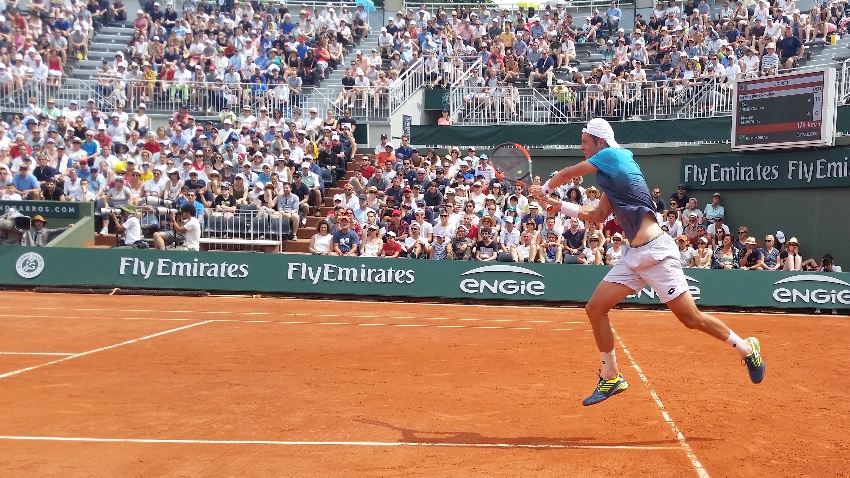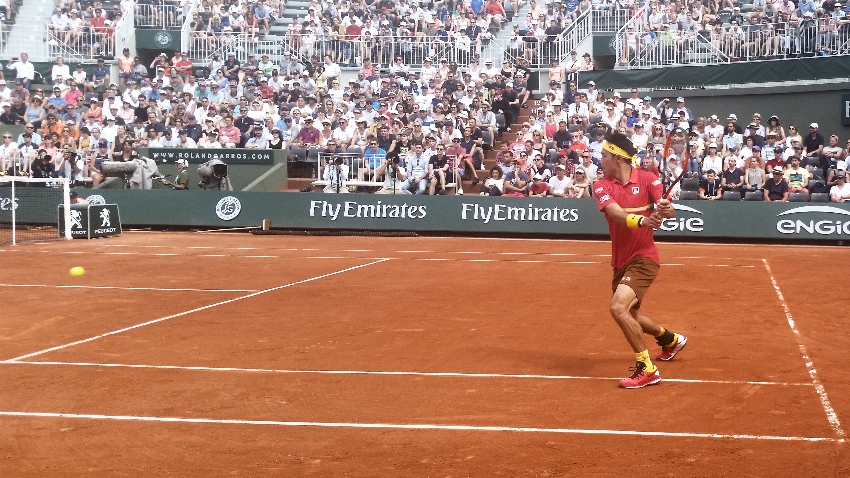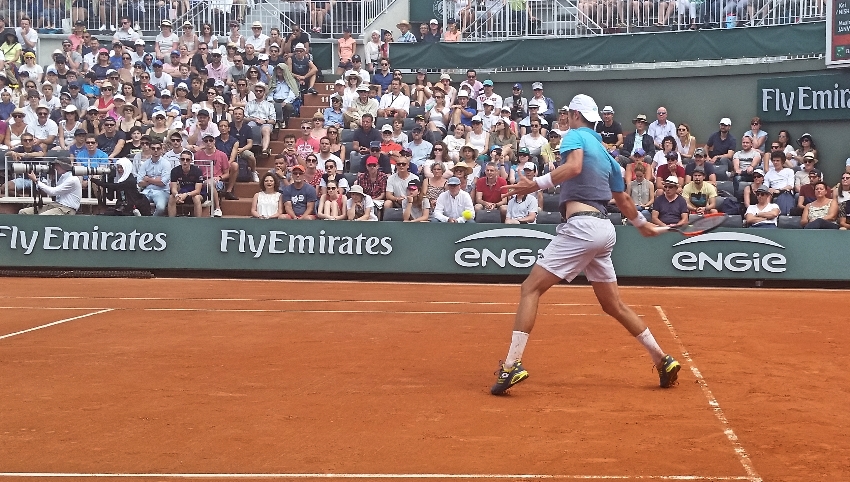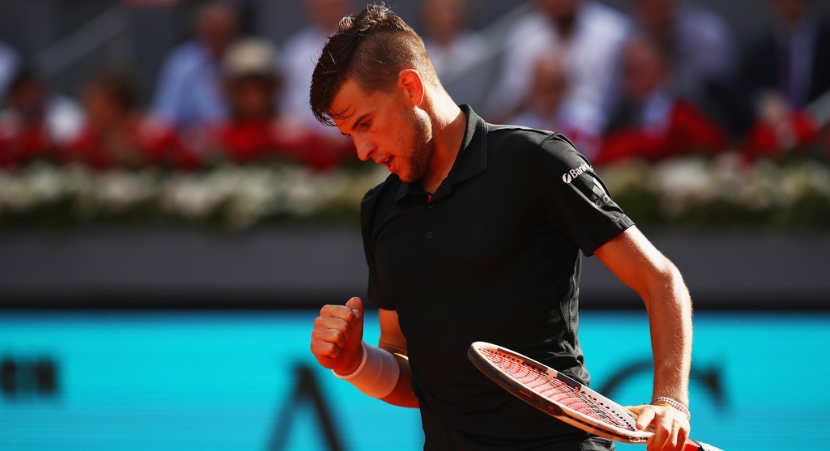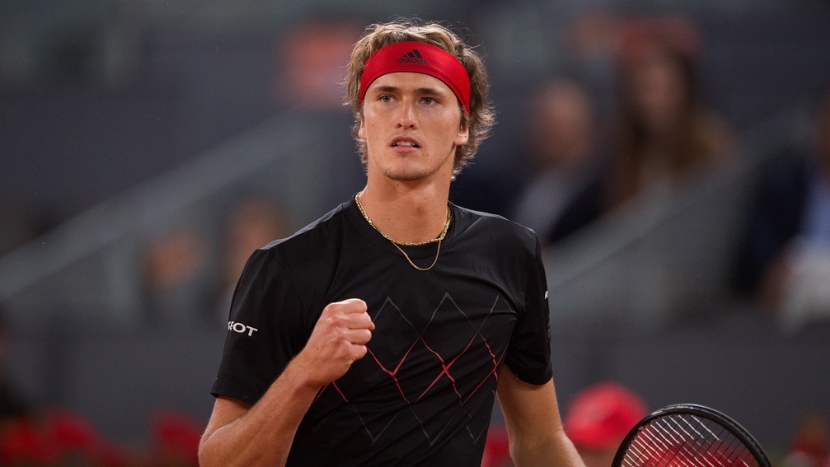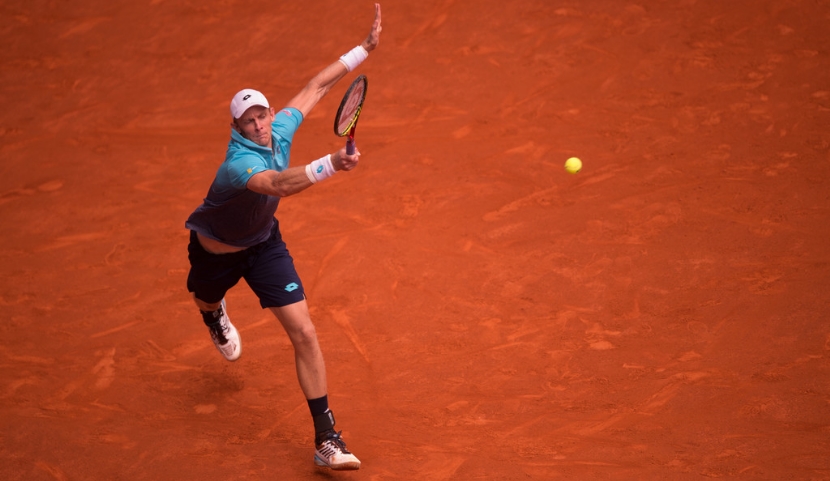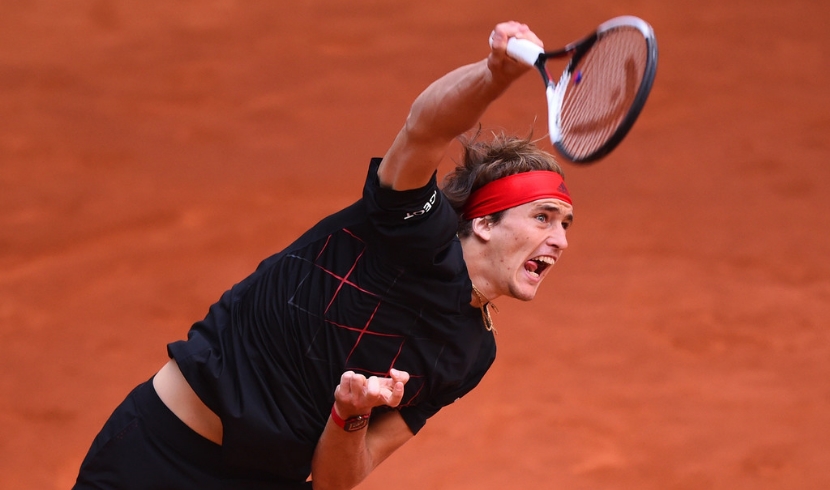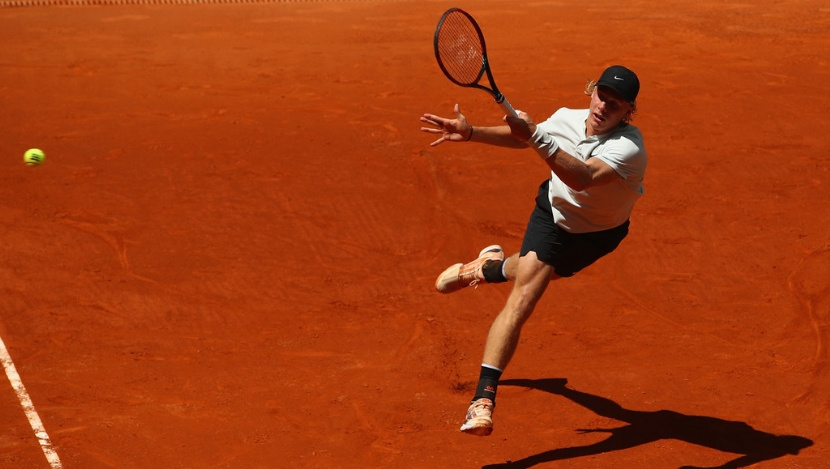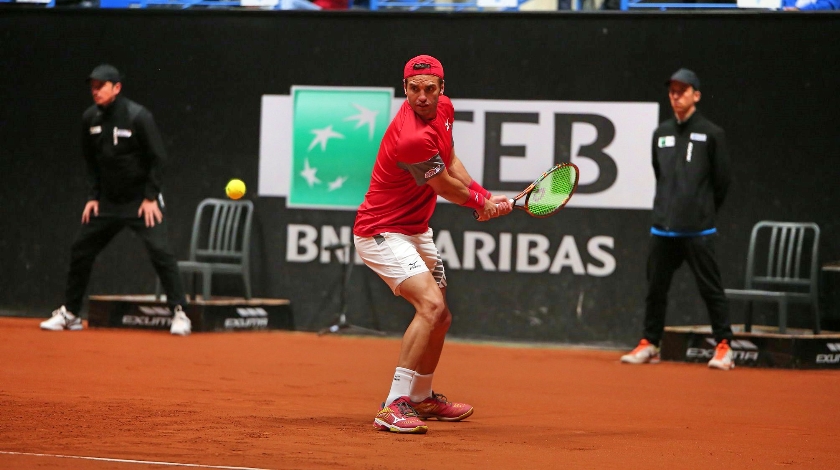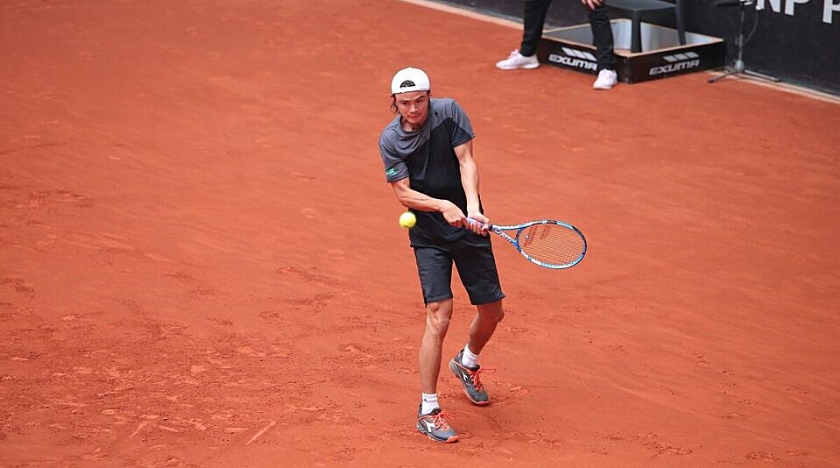Alex De Minaur, no.105 in the ATP rankings and the recipient of a Wild Card at Roland Garros (thankfully so, he would have missed direct entry by one spot in the rankings), entered Court no.3 earlier today as the clear underdog, at least on paper. His opponent was the 16th-seeded Kyle Edmund, the man who replaced the injured Andy Murray as the highest-ranked British player in men’s tennis earlier this year. There was also the fact that Edmund got the best of De Minaur just a month earlier on the clay courts of the Estoril ATP 250 event in straight sets, 6-2 7-5.
If you asked Edmund this morning, however, I am sure he would have had a much different expectation of the match than “the tale on paper.”
He was certainly aware that De Minaur had a phenomenal debut to his 2018 season, getting to the semifinals of the Brisbane ATP event, then topping that result with an appearance in the final round in Sydney. The 19-year-old Australian further galvanized his fans when he threw everything but the kitchen sink at Alexander Zverev in their Davis Cup duel at the end of January, only to come up short in the tiebreaker of the fifth set, in one of the most thrilling men’s matches so far this year.
Edmund is enjoying a terrific 2018 campaign himself, having reached the semifinals in the Australian Open and earned a top-20 ranking for the first time in his career. He also built some clay-court confidence by getting to the finals of the Marrakesh ATP 250 event, defeating Malek Jaziri and Richard Gasquet on the way.
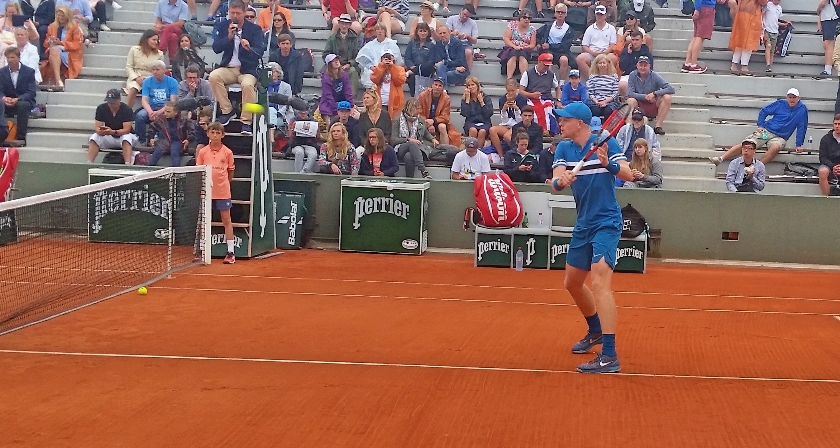
Then, there are the contrasting styles. Edmund is a straight-forward shooter with a dangerous first serve and a robust forehand that poses as a threat on any surface. His backhand down-the-line acceleration – one of his underrated skills – adds an additional dimension to his overall aggressive game. Although he does not have a flashy style, he can go on productive streaks in the course of a match that can leave opponents – and spectators – bewildered.
De Minaur, on the other hand, relies heavily on his footwork, consistency, and tenacity. His arsenal is not donned with as many weapons as Edmund’s is – although he can direct rallies well with his forehand when positioned on the baseline or inside – but he can counter-punch the heck out of some shots that may have looked spectacular when the ball left the racket of the adversary. He would naturally look to respond to Edmund’s shot-making with some of his own high-octane send-backs.
Except that he rarely got the chance to do that…
Edmund started the match at a stellar-level and relentlessly pushed De Minaur around. If it were not for a few glitches that his well-oiled machine encountered at about midway in the second set, this one may have turned out to be one of the more lop-sided matches of the first round.
The 6-2 6-4 6-3 victory by Edmund showed not only why he should be a force to be reckoned with, but also what De Minaur lacks in his game in order to become one himself in the future. In every area that De Minaur struggled – more details on that a bit later – Edmund excelled. For every ball from the middle of the court that De Minaur struck hard, but could not put away, Edmund fired a winner from the same position. For every break point that De Minaur earned, Edmund responded by raising his game to save them.
Edmund came out bludgeoning the ball. He hit a backhand down-the-line winner to go up 0-15. He then followed that up with a rally that featured three rocket shots in a row struck by him. De Minaur got them back somehow, but in his scramble to do so, he had no choice but leave too much open-court space to avoid Kyle’s backhand winner on the fourth strike. De Minaur managed to get back to 30-30, but Edmund nailed a return that he could not get back in the court and found himself in danger of losing his serve, five points into the match.
That break point at 30-40 encapsulated what awaited Alex for the rest of the afternoon. The two players engaged in a long rally, one in which De Minaur got to run around and hit forehands, heavily testing Edmund’s backhand. He even got to turn up the heat on a couple of those that he got to hit from the top of the baseline. But Edmund’s backhand passed the test, he sustained the rally. Eventually, De Minaur accelerated one more time with his forehand, this time changing direction, to the deuce side of Edmund. It sailed deep and De Minaur lost his serve from the gates.
It was ironically a good example of the type of point that De Minaur would like to play against Edmund, one in which he controls the rally from the middle of the court, working his opponent’s weaker side. Yet, he lost the point, because he was simply not able to unleash his forehands on Edmund the way Edmund was able to unleash them on him when he got similar opportunities – or, I should add, the way highly ranked players do when they get similar opportunities. De Minaur hit them hard, but not hard enough to produce a winner or force Edmund into an error.
To Alex’s credit, he recognized his shortcomings with remarkable clarity.
When I asked him about this specific contrast after the match, he acknowledged it immediately as something on which he needs work: “Yes, that was the difference. He’s got a little more power than I do. You know, obviously, it’s such a powerful game, short ball or middle of the court ball, he manages to put away. At this stage in my career, on clay, I don’t have the same sort of power, so I probably got to keep getting stronger. I will look at this match, you know, I have already talked about it [with his team].” He added that this type of shortcoming shows more on clay because “you gotta generate a lot more power [on] slower courts.” He affirmed more than once that he needs to keep working to get better at it.
The stark difference between the number of winners hit by each player serves to confirm the contrast. Edmund finished with 26 winners, De Minaur with 12**. More importantly, Edmund finished with 16 forehand winners, ten more than De Minaur hit with his forehand. Those are precisely the type of forehands that De Minaur was not able to put away (like in that break point in the first game), and that Edmund did.
** I do not include aces in the “winner” column. Hitting an ace is a whole different notion – and requires a completely different set of skills – than producing a winner off one’s ground strokes once the ball is in play. It’s a shame that official stats do not adhere to that standard.
In this day of advanced technology, many readers may have access to replays of matches. If you have one for this match, and you want to see what Edmund did in that same situation – when he had a chance to take charge with his forehand – see the break point that Edmund saved at 30-40, 0-1 in the second set**. In his very first opportunity to accelerate his forehand, he landed the hard forehand to the corner of the court, pushing De Minaur three meters behind the baseline. Alex was able to send the ball back and had to quickly recover to guard the open court. Kyle unloaded another forehand to the same corner, catching Alex on his backfoot, for a clean winner.
**For more examples of this, see also the two points in succession at 3-2, 15-15, and the 15-0 point at 5-4, all in the second set. Keep in mind, these are only few of the many.
In short, What De Minaur could not do in several forehands in that first break point of the match (see above), Edmund was able to do in two forehands.
This pattern also led to an odd statistic. It would seem like Edmund, being the risk taker, would end up with more unforced errors than his opponent who, as I noted in the introduction, relied more on his tenacity and footwork. Yet, when this pattern occurs, the less powerful player feels forced to step outside of his comfort zone, in terms of his “A” plan, to have a chance to win. Consequently, his error count climbs quickly. Edmund, who generally plays with lesser margins for error than his opponent does, ended up with 16 unforced errors, whereas De Minaur ended up 22**.
** That is by my count, of course. See my previous post for an explanation of why I keep my own count of unforced errors. The official count today for both players stood at 30 for Edmund and 32 for De Minaur. I wondered at one point if the stat person was not simply chalking it up to a player’s unforced-error count anytime he missed a shot from the baseline. You want to see an example of why I do not trust that count? See the 30-30 point at 1-1 in the second set. De Minaur hits a sharp cross-court forehand that puts Edmund on the full stretch (his legs were literally wide apart and sliding to get to the ball) and the Brit misses it in the net. That counted as an unforced error! Excuse me? And that is one of several – see also the forehand miss at the 5-1, 15-15 point in the first set. That also went into the records as an unforced error. Oh-kay…
The superior skills Edmund possessed in finishing the points was not the only reason for which he was able to win so convincingly though. If I claimed that, I would be undermining how clutch Kyle was on the few occasions that a glimmer of hope appeared to his opponent.
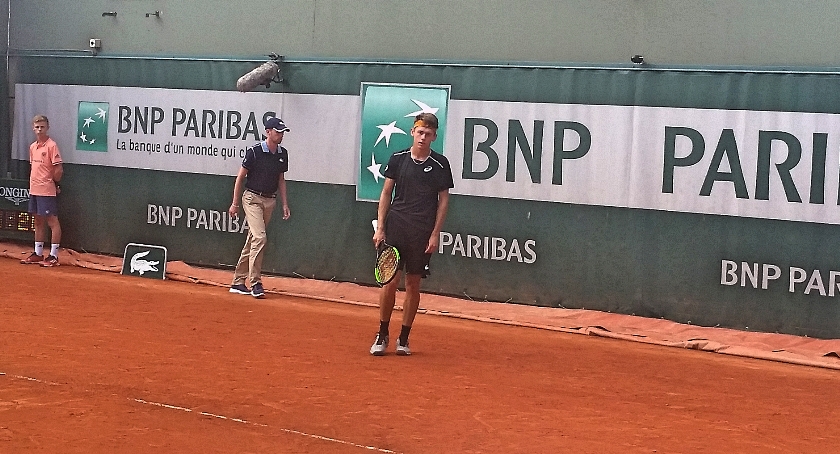
But before I get into that second major contrast, let me clarify for the record that serves did not play a major role in this match (two aces for Edmund, three for De Minaur). If anything at all, double faults were the source of the temporary glitch the Edmund machine experienced in the second set. All of his seven double faults for the match came in the that set, two of them playing a part in the only service break De Minaur managed to get.
But right after breaking Edmund’s serve and equalizing at 4-4, the Australian turned around and played his worst serving game of the match, one that featured three backhand errors and a double fault (one of his four for the match). He had a chance to get a late lead in the game count for the first time since the match had begun, and in less than two minutes, it slipped away from his hands.
Let’s compare that to how clutch Edmund was whenever he faced a difficult moment in the match (other than the break point that I noted above at 0-1 in the second set).
Moment 1:
After going up a break in the first set, Edmund faced a break point himself, serving a second serve at 2-1. He landed it so deep in the box that De Minaur (who was way inside the baseline in the hopes of unleashing his return on Edmund) had to hit an off-balance backhand that sailed wide. Edmund would hold serve two points later with an ace.
Moment 2:
In the second set, De Minaur led 2-1 and had a break-point opportunity on Edmund’s serve at 30-40. Kyle came up with three monster forehands in a row, running De Minaur from one corner to the other on the first two, leaving him helplessly as the third one flew by for a winner.
Time after time, Edmund remained clutch on important points. These are the types of differences that produce clear-cut, straight-set victories. You may look at the final score and be tricked into thinking that it was a boring match, but in fact, the quality of tennis on display was quite high. It is just that, as noted above, De Minaur needs more time to develop the type of skills that his opponent already possesses. The good news for Alex is that he had two chances to learn that lesson in a matter of thirty days – he said “the same thing happened” in their Estoril encounter. He should be able to identify what he needs to work on and tackle those challenges with alacrity.
As for Edmund, I am surprised that he does not get more recognition than what he has gotten so far. Players that have accomplished less than him in 2018 – and behind him in the rankings – are receiving more accolades than him. I am just curious to see on what court his second-round match vs Marton Fucsovics will get scheduled. I would not be surprised if it is not scheduled on one of the main courts (today’s match was on Court no.3).
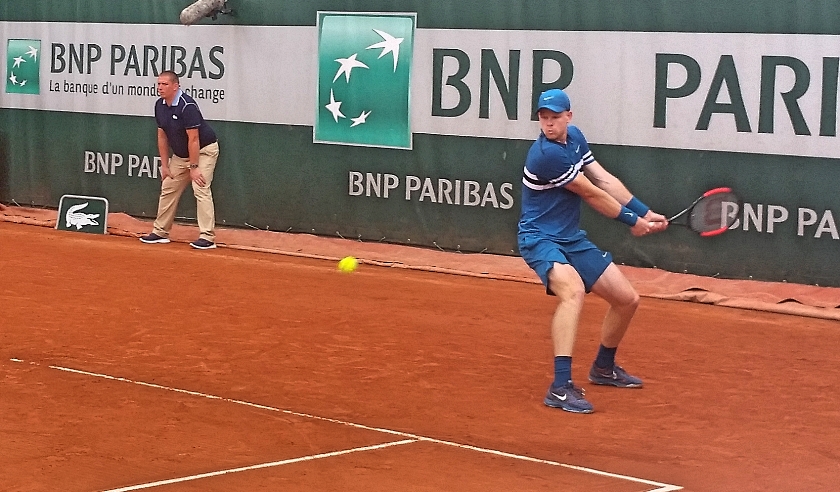
The reality is, Edmund played a rock-solid match to begin his Roland Garros campaign.
Forehand winners? He profusely produced them.
Successful backhand down-the-line accelerations? More than usual.
1-2 punch winning points? Plenty.
Clutch? You bet.
Fucsovics will have his hands full in the second round.
Until next time…

